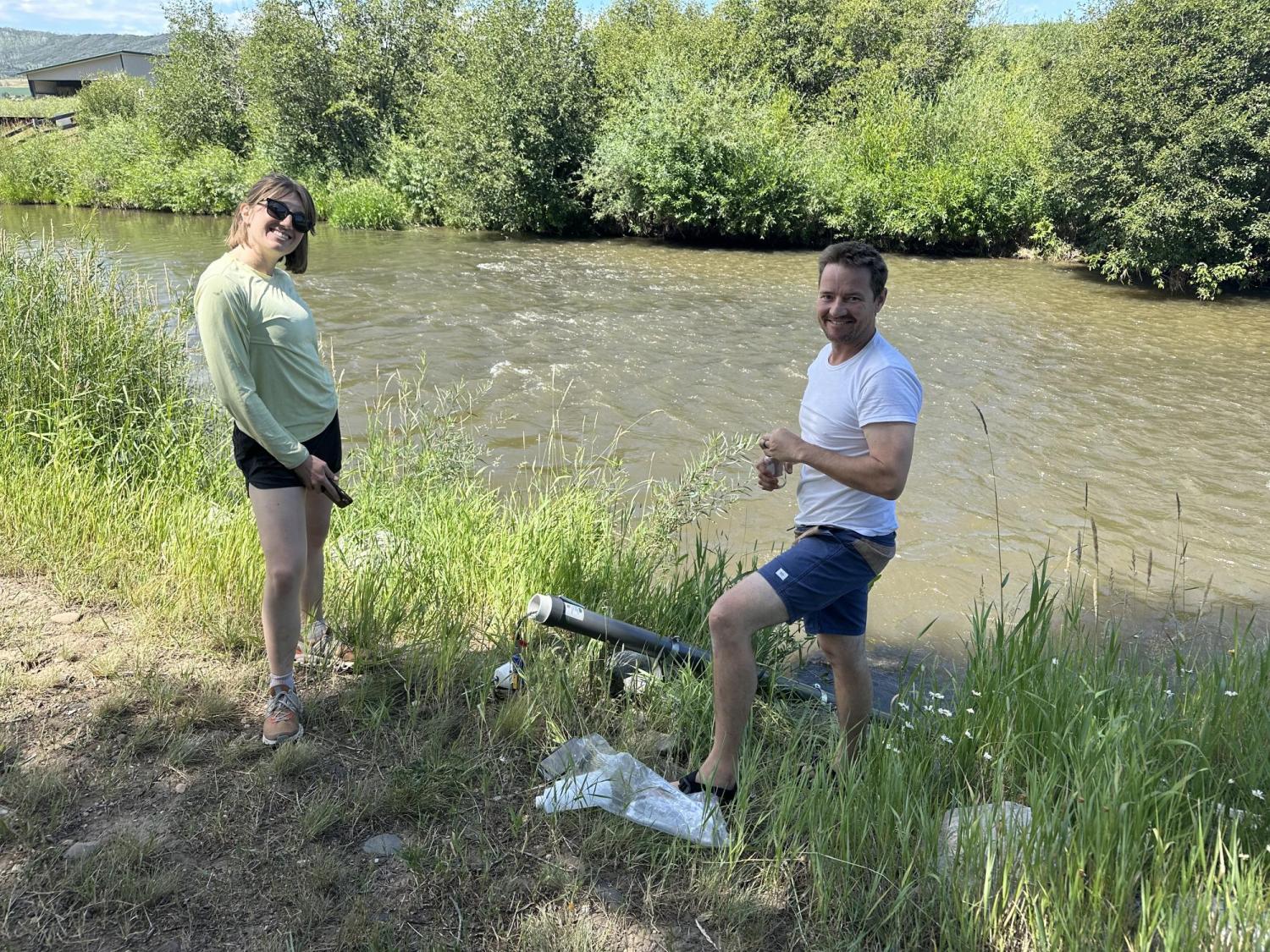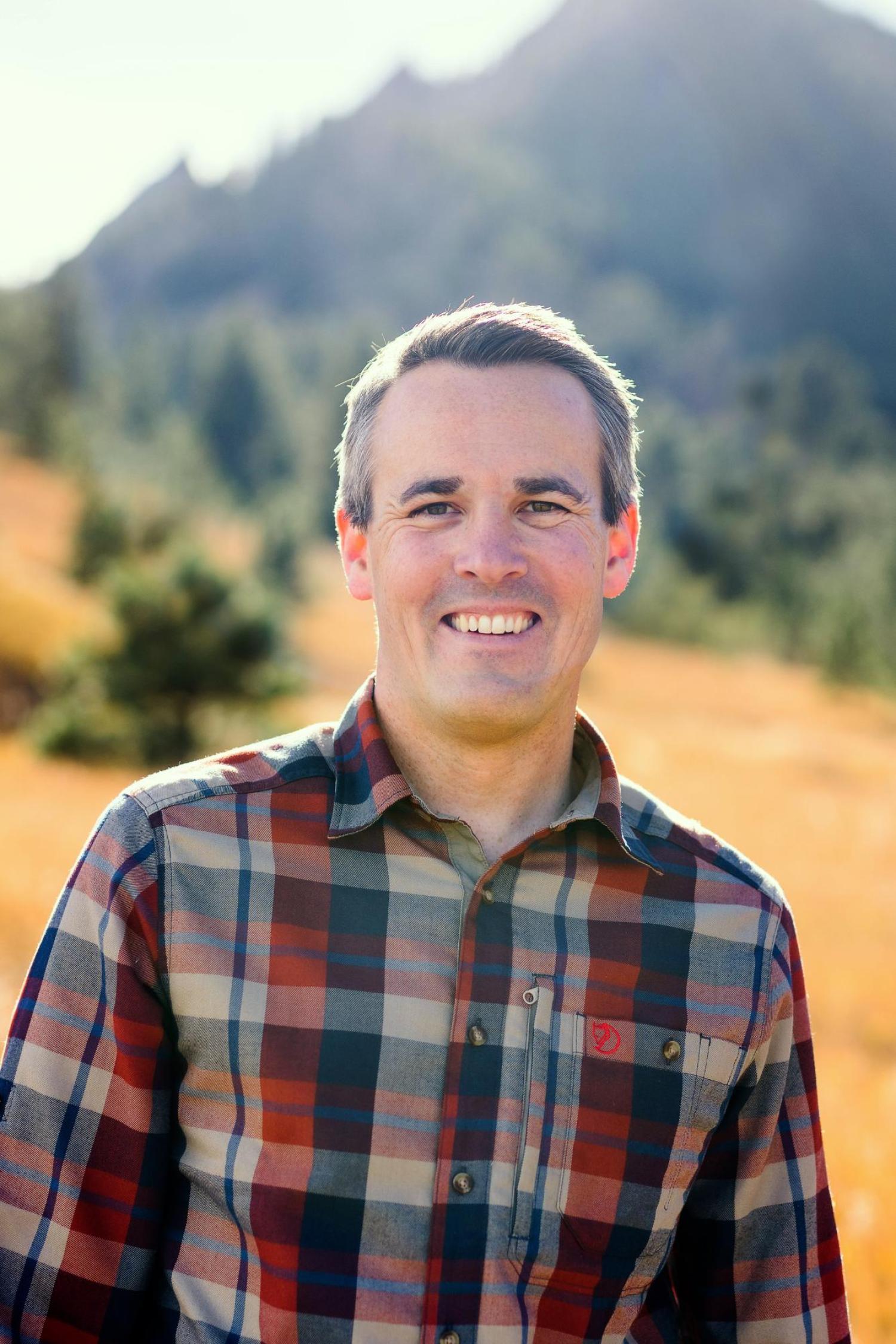CU Boulder leading effort to improve water quality in Rockies’ rivers

Kat Demaree and Jason Quinn installing an in-situ water quality tool with multiple sensors providing near-continuous measurements of turbidity, chlorophyl-a, conductivity, and fluorescing dissolved organic matter (fDOM) along the Yampa River near Steamboat Springs.
Using machine learning for better water quality
University of Colorado Boulder and Colorado State University researchers are teaming up to improve river water quality in the Rockies.
A team led by Environmental Engineering Professor Evan Thomas has received a $650,000 Convergence Accelerator grant from the National Science Foundation, to measure and mitigate pollution in the Cache la Poudre and Yampa Rivers in Colorado through new sensor technology, monitoring, and a voluntary carbon credits trading system with industry.
The Convergence Accelerator grant complements other Thomas-led initiatives also working to improve water quality. The work has also been funded by the Moore Foundation and the Walton Family Foundation. Thomas was influential in scoping the $160 million dollar NSF funded Colorado-Wyoming Regional Innovation Engine, and recently received a United States Congressional earmark directed-grant from NASA also targeted at the Yampa and Poudre rivers.
Thomas has been working with Colorado State Senators Cleave Simpson and Jeff Bridges, and the Colorado Department of Public Health and Environment to advance legislation that could accelerate watershed restoration in Colorado by pairing wastewater utility water quality obligations under the Clean Water Act with restorative programs.
A central component of these projects is the use of ongoing, instream water quality measurements that will allow the team the ability to trace back negative changes, said Thomas, who also serves as director of the Mortenson Center in Global Engineering and Resilience.
“Typically, this work is done with point-in-time measurements when someone goes out and manually takes a sample, which is very expensive and infrequent. These new sensors we have are robust and durable and will allow us to do things continuously,” Thomas said.
The sensor data, enabled by a partnership with Fort Collins based sensor company In-Situ, will be fed into a machine learning system to develop predictive models that can track pollution and determine sources.
“Machine learning and AI aren’t new, but we’re applying these techniques in a place they haven’t been applied before – managing watersheds and enabling climate finance to pay for ongoing performance,” Thomas said.
Fernando Rosario-Ortiz, a professor of environmental engineering at CU Boulder and co-investigator on the project, said the grant builds on a wealth of earlier research.
"I am excited about taking all we have learned about wildfires and water quality and focusing now on how we can proactively work with communities to limit these impacts and the stresses they have on water infrastructure," Rosario-Ortiz said.
Being able to track back pollution sources has been a long-sought goal of environmental

Evan Thomas
researchers. While it is simple to monitor pollution coming from fixed-point sources, like the outlet of a wastewater treatment plant, it is much harder to analyze diffuse sources, like runoff from industrial agriculture, mining, or forestry operations.
“It has been a technology barrier, and regulators have been reluctant to approve water quality projects that are hard to measure,” Thomas said. “We hope to change this. We’re working with landowners, stakeholders, and cities to make positive changes for restorative agriculture, irrigation, and wildfire management.”
In addition to water researchers at CU Boulder and CSU, the team has built a network of outside partners, including the cities of Steamboat Springs and Fort Collins, Friends of the Yampa, and Coalition for the Poudre River Watershed, as well as Virridy Inc., a CU Boulder spinout company that develops global water security programs.
A second key part of the project is a voluntary carbon market that aims to build industry investment in green infrastructure to improve water quality. Although the project is just getting underway, Mortenson Construction has already purchased $2 million in credits through it. Thomas said this market could generate as many as 1.6 billion carbon credits per year.
Thomas has been involved in large scale drinking water treatment carbon credit programs in Africa over the last 15 years, reaching over 5 million people with improved water security. This represents the first major effort in the United States.
“This is a way for industry and companies to demonstrate to shareholders and customers they’re committed to climate impact,” Thomas said. “It takes local water problems and brings them into the global market, creating business opportunities.”
In addition to Thomas and Rosario-Ortiz, the team at CU Boulder includes Kat Demaree, environmental engineer and doctoral student. At Colorado State University, the effort is being led by Matt Ross, an assistant professor of ecosystem science and sustainability, and Jason Quinn, a professor of mechanical engineering. Also involved in the project is Krister Andersson, a sustainable development professor at Notre Dame who previously was a CU Boulder faculty member.


